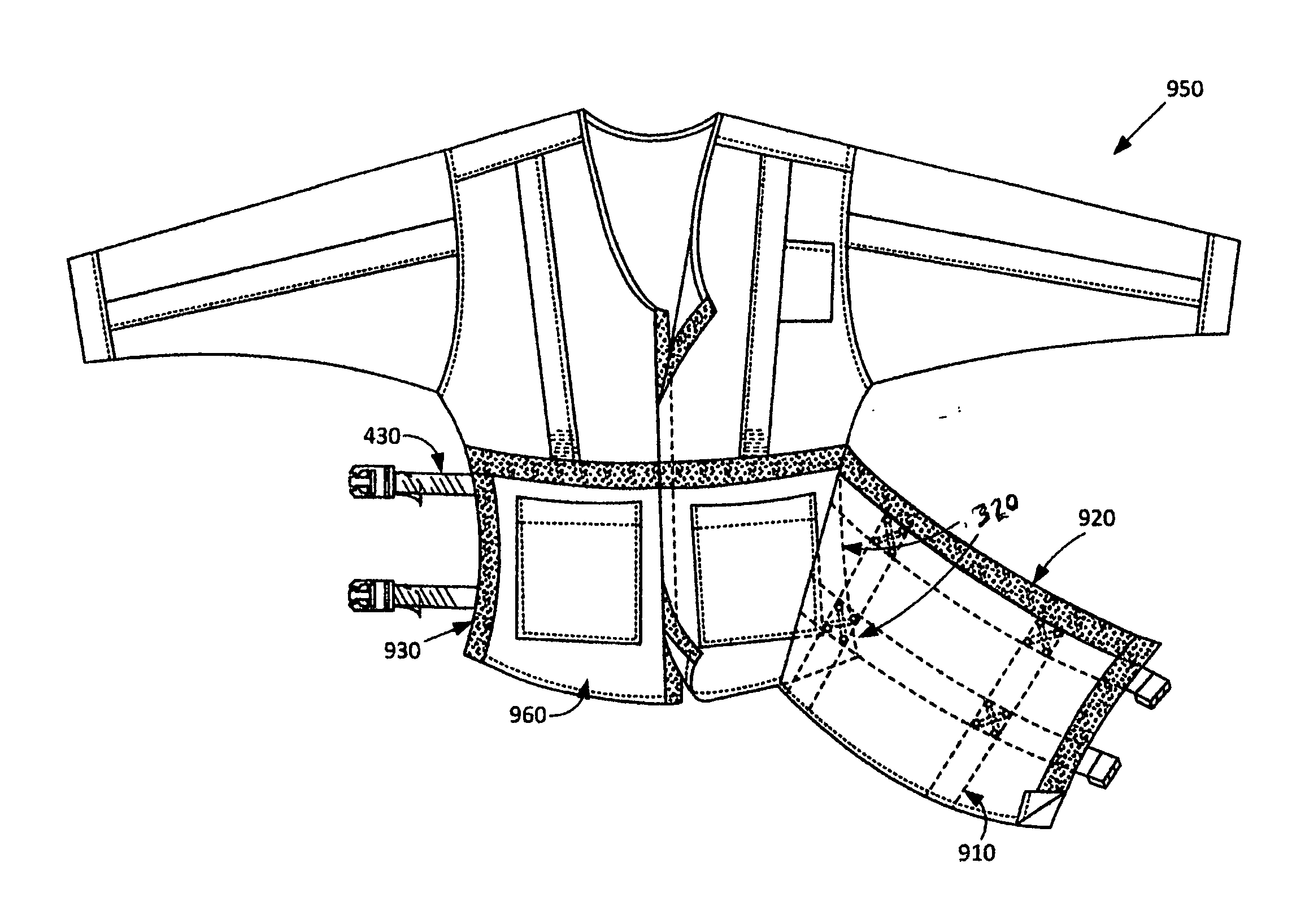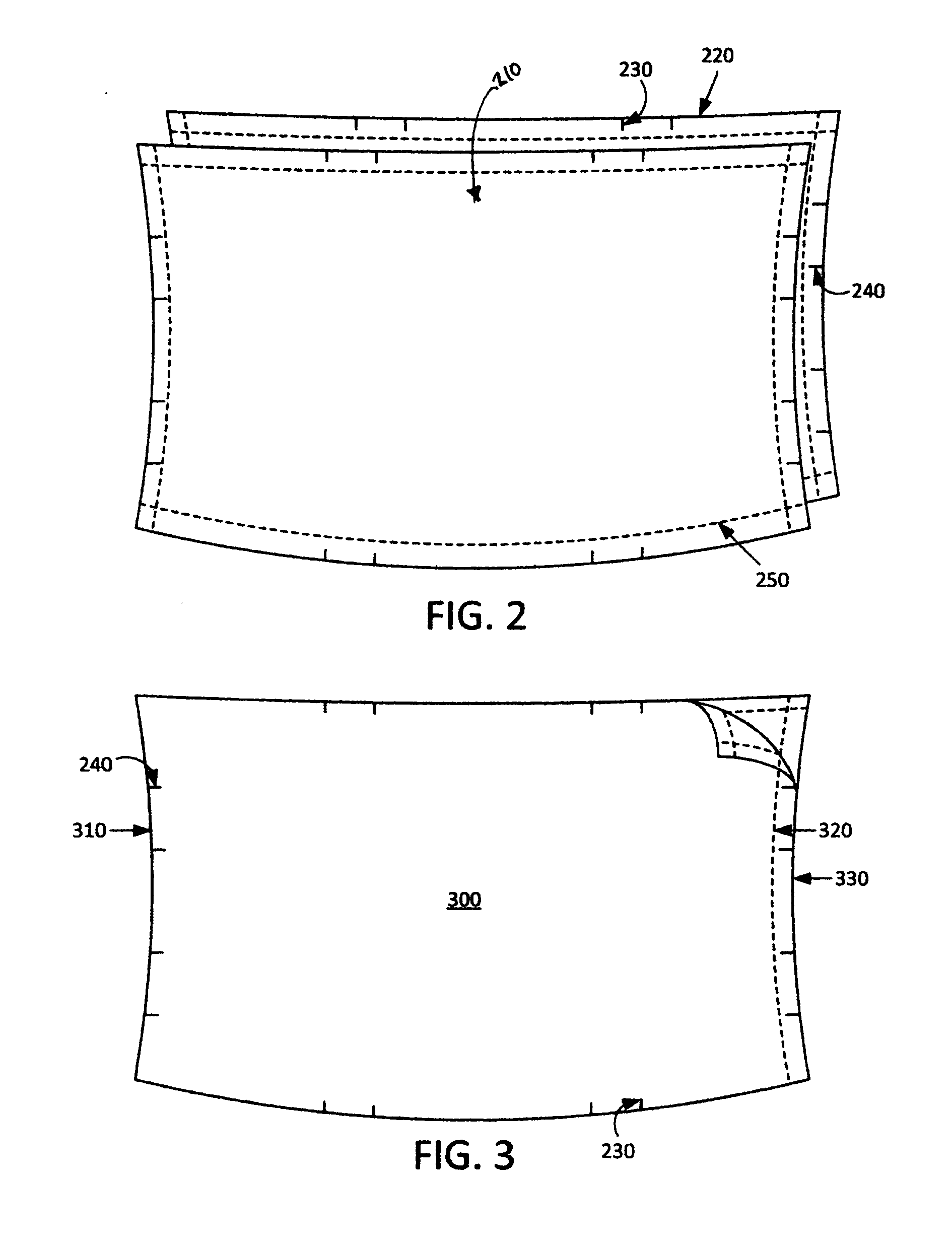1) Inventions similar to the present one which seeks to secure a passenger on a motorcycle, Jet Ski, or in some other similar situation. U.S. Pat. No. 7,331,836 B1 directed toward
watercraft;
Patent Application US 2012 / 0137417 A1, directed to
open air transportation; U.S. Pat. No. 5,619,751 directed to
watercraft and described as being worn over a life
vest, U.S. Pat. No. 3,562,812 A directed toward use with motorcycles, U.S. Pat. No. 4,172,292 A directed at aiding a handicapped rider on a horse. U.S. Pat. No. 3,533,107 A Safety garment for cyclist. U.S. Pat. No. 4,411,222 A Safety apparatus for passengers on vehicles and U.S. Pat. Mo.
2) Inventions where the handholds are used as an aid to grab onto a person as might be helpful for example in water rescue. U.S. Pat. No. 7,331,836 B1 (a dual use with category 1).
3) Inventions where the handholds are used to lift a person, either an adult or a child. U.S. Pat. No. 5,369,804 A an infant carrier. U.S. Pat. No. 5,301,418 to help support a swimmer.
4) Inventions where the handholds are used to help hold onto a person such as an invalid who needs to be supported. U.S. Pat. No. 4,172,292 A is directed at aiding a handicapped rider on a horse (a dual use with category 1), U.S. Pat. No. 5,836,310 A is a
vest to help hold up patients, US
Patent Application 2004 / 0133963 A1 is a vest used to help move or position a patient.
5) Other inventions are for specialized purposes, e.g. U.S. Pat. No. 6,240,564 B1 handholds to aid in forming a more
solid rugby scrum,
Patent Application US 2014 / 0100500 A1 handholds for getting a more effective grip on a towel-like sheet of material being used to compress the
torso of the user, U.S. Pat. No. 4,599,750 A a convenient handhold for which can be attached to a pair of pants or other garment for a child to hold onto an adult, and U.S. Pat. No. 6,167,572 B1 Page handles on a trouser-like garment so that one dancer can hold onto another while twirling the other in the air. U.S. Pat. No. 5,289,896 has a belt and handles positioned in the back of the driver, the handles could easily dislodge since the load is separated from the driver and pulling backwards from the back. This invention suffers from an unbalanced load. While noting the similarity of possessing handholds, only the first category is actually relevant since it is the only one in which they are used so that a person can hold onto another person anchoring the handholds when high accelerations are attempting to separate the two. U.S. Pat. No. 7,331,836 B1 mainly focuses on a vest which, as depicted, suffers from the flaw that a person holding onto it would put force on the
fastener in the center of the vest. Handles on wet suit pants are also depicted in the drawings, but the claims are limited to “a life vest” having a “neck opening” and “opposed arm holes” which do not describe wet suit pants. There is no indication in the patent that it envisioned solving the problem of forces on the “attachment feature configured for securing the life vest”. Patent Application US 2012 / 0137417 A1 depicts in the drawings a lightweight garment with a zipper in the center of the front of the garment (claims 1 through 6), a nylon
webbing harness either standing alone (claims 12-15) or sewn inside the garment of claim 1 (claims 7-11), and a light-weight
waist-length garment (claims 16-20) not depicted in the drawings. The inventor seems to have considered stress, particularly in the embodiments involving a harness where he describes the handles as attaching to both belts of his harness “in order to evenly distribute passenger loads across the
torso of the driver”, but here he does not explicitly recognize that the “quick release mechanism” which secures the harness to the torso is a failure point since he depicts it in his drawing as at the center of the front of the harness and he describes it in his claims as being “on the front torso”. His lightweight garment claims, as stated above, have associated drawings that show the garment closed by a zipper centered at the front of the garment. His lightweight garment claims are silent on how the garment is closed. Describing the garment as lightweight suggests that the inventor here was not seriously taking the stress as a factor in his invention. He does not seem to recognize that the fasteners are a weak point in the design of his invention. U.S. Pat. No. 5,619,751 claims a safety vest with buckles depicted in the center of the front of the vest and claimed as being “near the middle of the front torso”. This inventor, too, seems not to have recognized the buckles as being failure points. Strap 52 can easily tear away. U.S. Pat. No. 3,562,812 A to the extent that the specification and figures illuminate the single highly limited claim of this invention, it “essentially comprises an adjustable length, sturdy strap with a conventional length adjusting means, such as a buckle” depicted in the center front of the jacket. The claim calls this a “cooperating adjustable fastening means detachably securing said elements to each other”. In any case, the forces of the second rider pulling back on the “side hand grip units” would go directly into said buckle, a
failure mechanism which the present invention avoids. Here the belt can injure the driver on heavy loads because it is too narrow meaning that stress forces are distributed over a limited area. It is like an having an injury resulting from having a 100 lb woman stepping on you wearing stilettos as opposed to the same woman stepping on you wearing flat shoes. Patent Application US 2012 / 0137417 A1 claims a life preserver jacket with attached grip handles. It depicts the jacket as having a zipper in front and it makes no mention of the possibility that said zipper might fail. U.S. Pat. No. 4,172,292 A is directed at aiding the wearer, a handicapped rider on a horse. As an apparent afterthought it mentions use “in providing a handhold for the rear person in tandem riding situations”. The two front views of garments depicted in the drawings show buckles closing the front center. Some consideration was given to stress; larger buckles are used in areas which will receive greater stress. Clearly the inventor of this aid for handicapped riders did not recognize the possibility of the present invention in which forces through the fasteners are avoided. U.S. Pat. No. 3,533,107 A Safety garment for cyclist. U.S. Pat. No. 4,411,222 A Safety apparatus for passengers on vehicles and U.S. Pat. No. 4,429,419 A they all have one thing in common, their handles are affixed so they are not part of the belt or garment. My handles are part of the belt, that's the big difference. None of the prior art anticipates the present invention.
 Login to View More
Login to View More  Login to View More
Login to View More 


